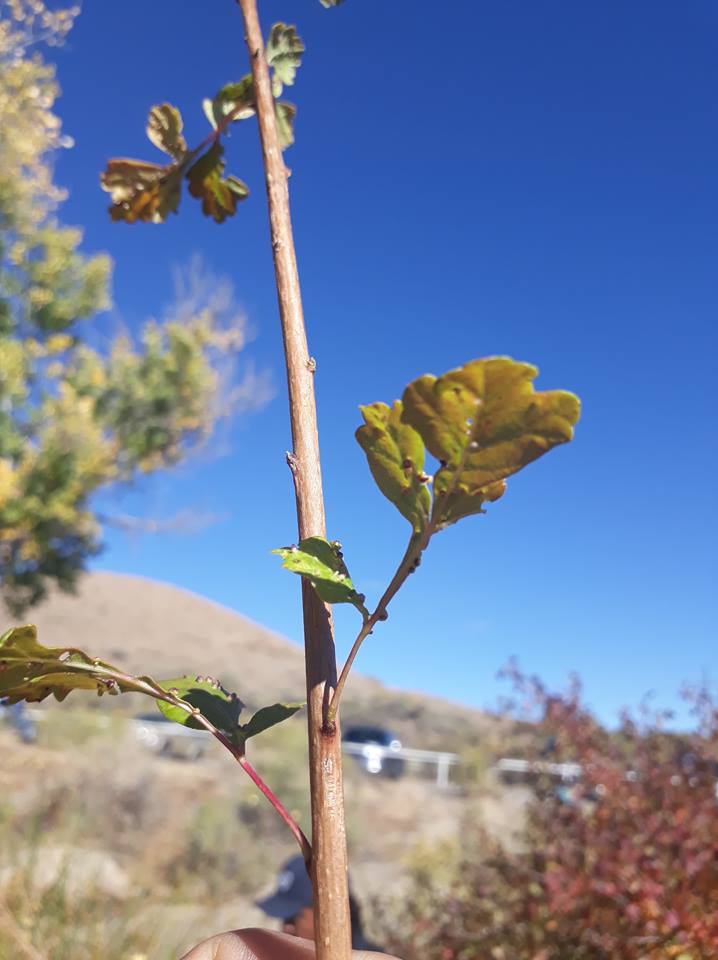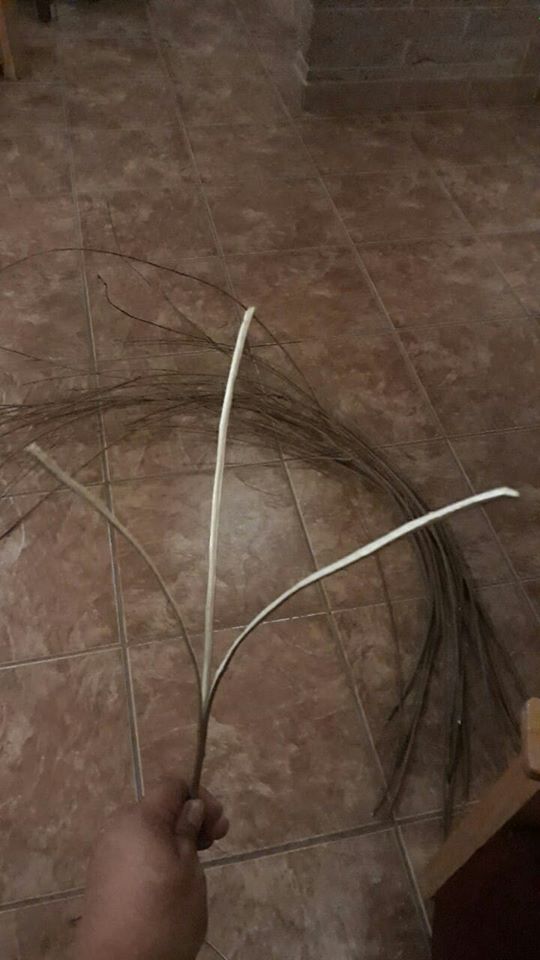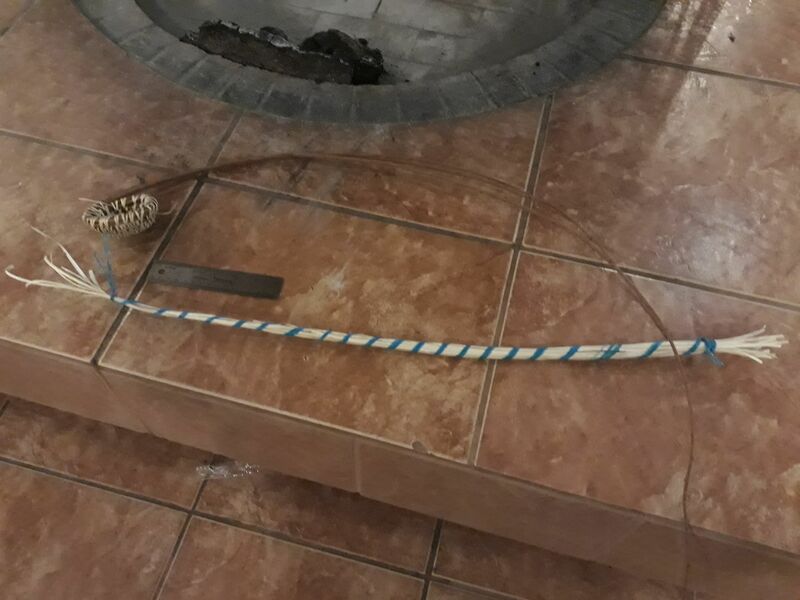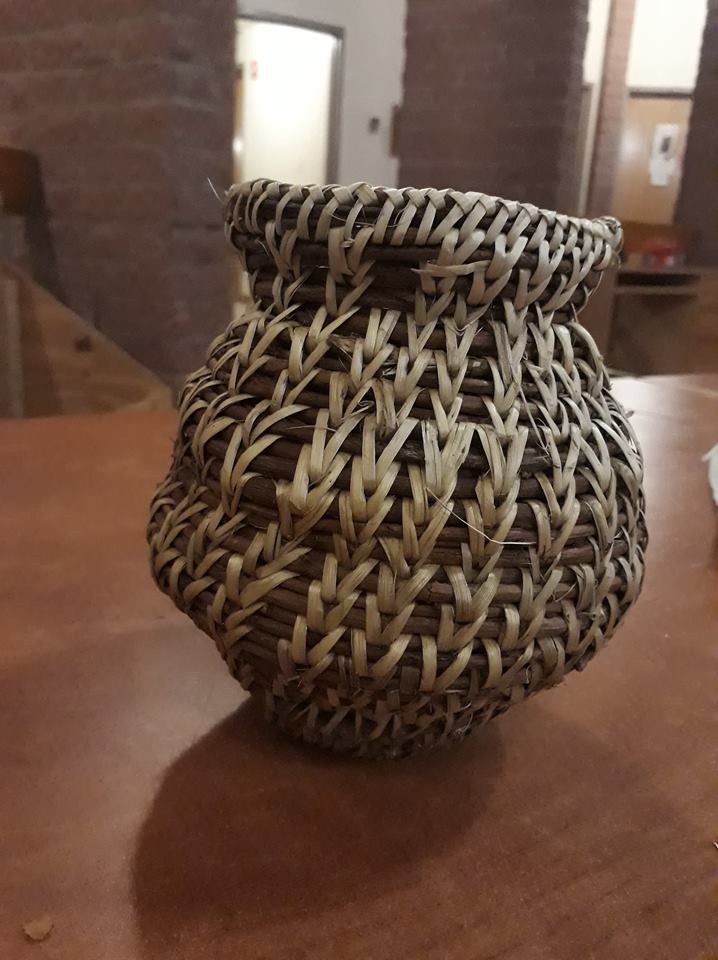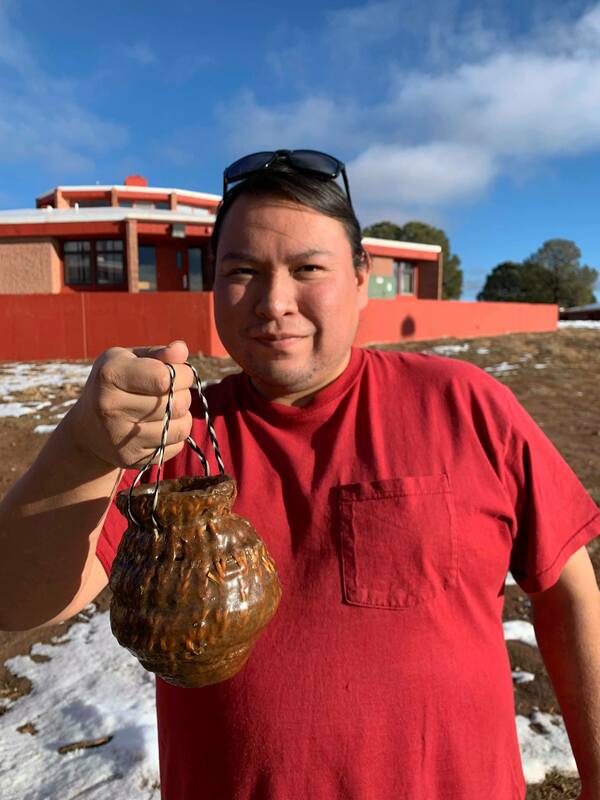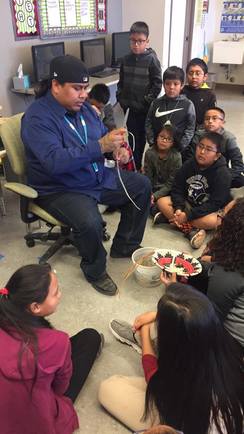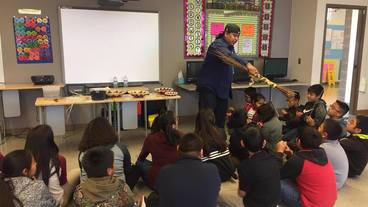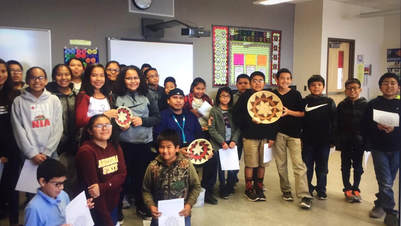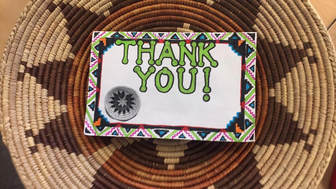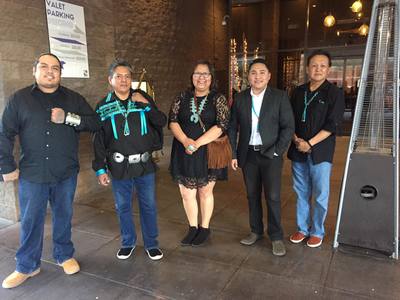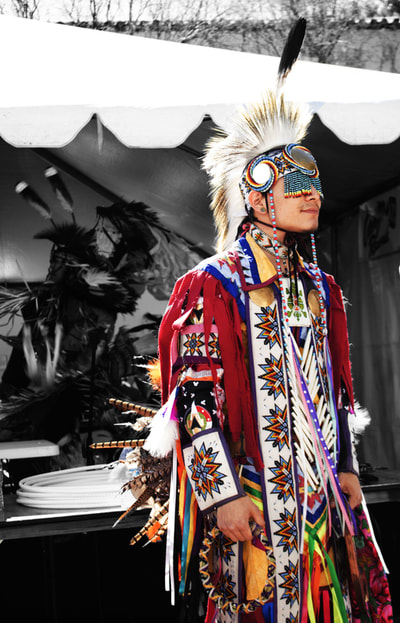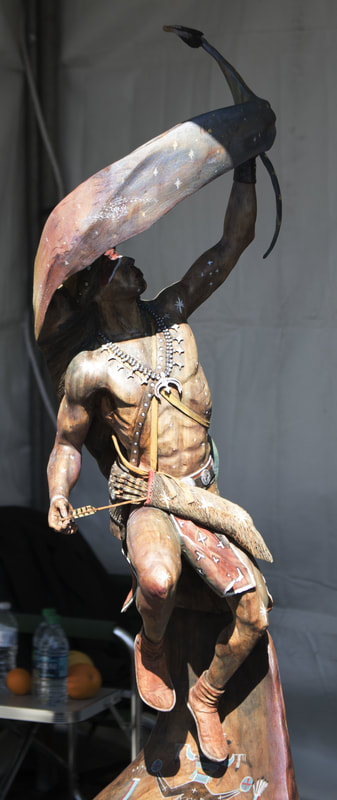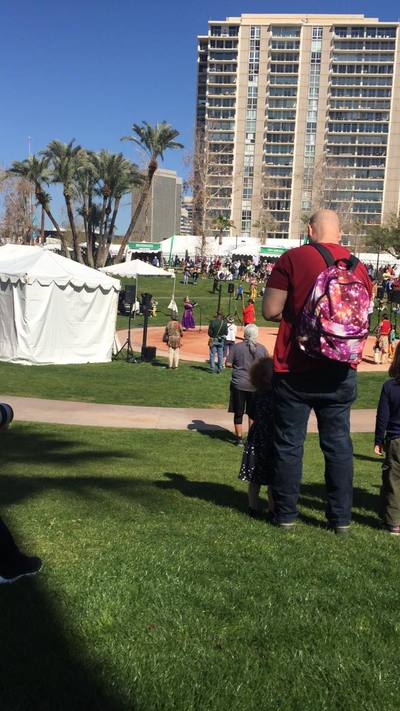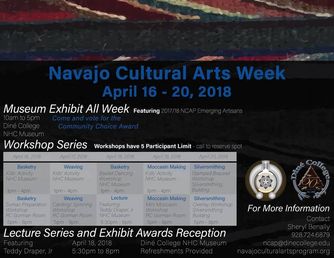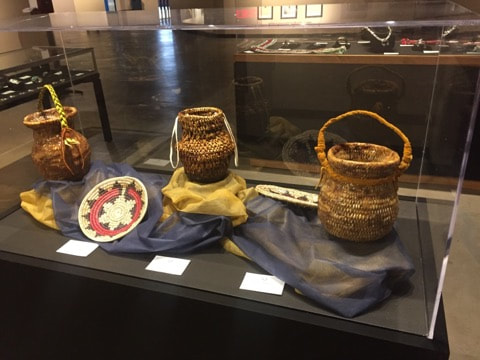Brandon R. DinaeNCAC Emerging Artisan 2018/19 (Basket Maker, Moccasin Maker, Silversmith) Yá'át'ééh t'áá ánółtso. Doone'é nishłínígíí éí Bit'ahnii dóó Hooghan Łání bá shíshchíín. Tł'ógí Táchíi'nii dashicheii dóó Kinłichíi'nii dashinálí. 'Akot'éego diné nishłį́ dóó Tsé Digóní keehasht'į́. Béésh łigai atsidí dóó kéłchí ayiilaa dóó ts'aa' ayiilaa baa da’ííníshta'. Brandon Dinae yinishyé. (Hello everyone. I am from the Many-Folded-Arms-People clan born for the Many-Hogan-Peopleclan. My maternal grandfather is from the Browned-Banged-Weaver-People clan and my paternal grandfather is from the Red-House-Peopleclan. I am Navajo and I live in Mitten Rock, NM. I am studing Silversmithing, Moccasin Making, and Basketry as part of this year's Navajo Cultural Arts Certificate Cohort. My name is Brandon Dinae) I’ve wanted to learn to make baskets for years and the NCAP has given me the chance to learn from individuals who have been making baskets for years. In the Fall, in addition to our basket making class with Thomas Yellowhair as our instructor, we have also learned about baskets and basket making in our NIS129 Navajo Cultural Arts Materials and Resource class. As a cohort, we were instructed on harvesting K'į́į́' (sumac) for our Tóshjeeh (water jug) project. This meant jumping in a van and actually going on a hunt. We got to meet NCAP alumni, Waycee Harvey, who is also a basket maker. He accompanied our cohort on the trip to teach us how to find sumac and split it.
I learned a lot of things that day... especially about pollen. Little did I know that K'į́į́' has a very potent reaction on some of its hunters. The pollen for the sumac can induce allergic-like symptoms and, it turns out, I was not immune. For me, this was strange because I’m not allergic to anything - at least not anything that I know of. During gathering, my nose insisted on dripping and I didn’t know why I was sneezing profusely. After we gathered what we needed, Waycee showed us how to spit the sumac. While getting used to the taste of the sumac branches our workshop leader informed the class that our reaction to the plant was caused from pollen of the K'į́į́' Bi'áád (female sumac). Thanks, Teach 😂! Now I know what sumac pollen feels like. The trip was a success and I had picked enough K'į́į́' for the weaving portion of my project. Once we got home, I worked on splitting and gathering jeeh (piñon sap). In class, I learned from Thomas Yellowhair how to sew the jug, attach handles, and cover the piece with jeeh, making it water proof. I am extremely excited for spring and learning to weave the ts'aa (ceremonial basket).
0 Comments
Waycee Harvey Emerging Artisan, 2017-18 Cohort (Moccasin Maker/Silversmith/Basket Maker)
So, we arrived at Tsehotsoi Middle School on the morning. I had my baskets and other necessary items in hand, then proceeded on into the school. As the NCAP program assistant and I got into the classroom, we were greeted by a young group of students. They were well mannered and eager to hear about basketry. After a quick introduction from the teacher, I was asked to begin my presentation. As usual, I began by introducing myself the traditional way: stating my clans, my name, where I’m from, and what I’m presenting. I then began to tell the origins stories of Navajo Basketry. I proceeded on with the history of Navajo Basketry, all the way from the emergence and the recreation of our “Ts’aa’.” As I was going on with the story, I also mentioned the patterns and colors incorporated in baskets and explained the significance. I was amazed with one student, I would ask a question for the whole class and she answered with great accuracy. So, I got to the point where I felt it was necessary to show them how a basket is stitched. At the time, I had a basket which I was working on and I showed them all about the various kinds of stitching. I had no clue how much interest they would have until I got to the that part. All the students looked closely as I stitched the last ring, which was the cedar stitch. At about this time, I began wrapping up my presentation and I wanted to know what the students have learned. So, I pointed to symbols on the basket and asked them what it represented, to my surprise the class answered correctly. I still had 2 more groups to present to on the same topic. It was just a repeated process for each group. Before departing the school, a group of kids came up to me and handed me and thank you card signed by an entire class. Inside of that card was an envelope, I didn’t think anything of it or bothered to open it until we arrived back in Tsaile. Inside that envelope was 17 dollars, which all students contributed to. This experience has given me an idea of what to expect in future demonstrations and I strongly feel I’ve executed my objective satisfactorily. The students were awesome as well, they made this presentation memorable for me. I’ll carry on this motivation to every demo, presentation or workshop I lead in the future. You could learn how to host workshops too! Just join the next NCAP cohort, starting in August 2018. It is a 24 credit hour program over the course of 2 semesters. Worth it? I would say so! Just contact Christine or Sheryl from NCAP for more information!!
And if you are interested in checking out some of my basketry - don't forget to stop by my WH Moccasin & Basket Design facebook page! Brent Toadlena Emerging Artisan, 2017-18 Cohort
One of my favorite experiences has been going to the Phoenix Heard Museum Indian Market. On the weekend of March 2, 3, & 4, I traveled with my peers to Phoenix. Although I have traveled to Phoenix a lot and even occasionally visited the museum, I had never really attended the Indian Market until this year. Around 1986 or 1987, when the market was in its infancy, I came to one of the first events that eventually became the Indian Market today. Back then, the event was very small and Native Americans did not have to pay admission to attend. So when we were told we were attending this year’s event, I was anxiously anticipating the event. To say that the Market had grown is an understatement! Never having seen the enormity of the event that is held nowadays was overwhelming. Sheryl, the NCAP Assistant, had a whole agenda for us. The first evening we attending the Best of Show reception where we got to mingle with people. I got to reunite with an old friend from San Felipe Pueblo who is a potter. We had not seen each other since 1998 so we were able to catch each other up. The best of show exhibit was amazing! I particularly liked the photography and will make plans on entering the show in that category in the future. Saturday I went to all the booths and made some good connections with certain artists such as Joe Cajero, Jr of Jemez Pueblo, Eric Fender of San Ildefonso Pueblo, and Sally Black, world famous Navajo basket maker. One of the best things I saw was a young teenager splitting feathers to make arrow fletching! His skill was mesmerizing! Another contact who is important to mention is Sarah Greenfield, who I found out is one of the board members of the museum. She was my Jr. High School Counselor. I’d like to talk with her about helping me get a moccasin making demonstration set up at the museum - so keep an eye open for that. All in all, I thoroughly enjoyed my experience. I liked that our NCAP family was able to spend this time together and have a great time. I definitely have some ideas about how I will get into this venue! If you have time during the Navajo Cultural Arts Week, swing by Monday evening to the RC Gorman Room on the second floor of the NHC from 5-8pm. I'll be hosting a Sumac Splitting Workshop there! AND stop by the NHC Museum to vote for your favorite pieces. The winner will receive the "Community Choice Award."
|
Categories
All
Archives
October 2021
|
SocialsALL PHOTOS IMAGES ARE COPYRIGHT PROTECTED. PHOTO IMAGES USE IS SUBJECT TO PERMISSION BY THE NAVAJO CULTURAL ARTS PROGRAM. NO FORM OF REPRODUCTION IS PERMITTED WITHOUT WRITTEN PERMISSION FROM THE NAVAJO CULTURAL ARTS PROGRAM. |
Featured Pages |


